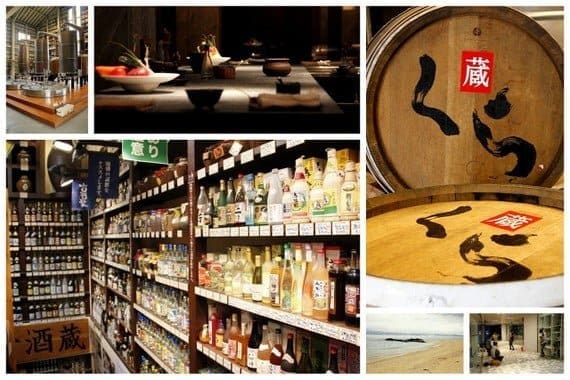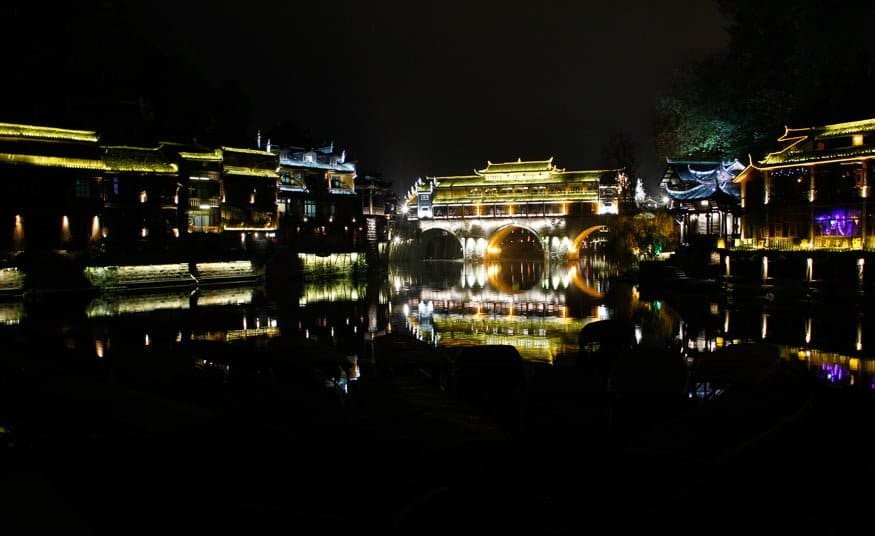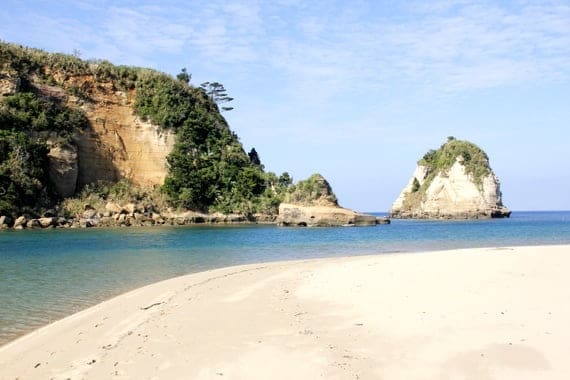
After getting our feet wet on Okinawa’s largest island, we navigated to the tiny isles in the far reaches of the Ryukyu archipelago. Most people don’t make it this far but the Okinawa tourism bureau and Hoshino Resorts are trying to change that. To help spread the word on the unique beauty and culture of remote Okinawa, they invited little ol’ HoneyTrek to check it out. In our island-hopping tour we went to culture-rich Taketomi, adventure-packed Iriomote and the resort-fabulous Kohama. Each offering a little something different, this was the perfect Okinawan mix just a short ferry apart.
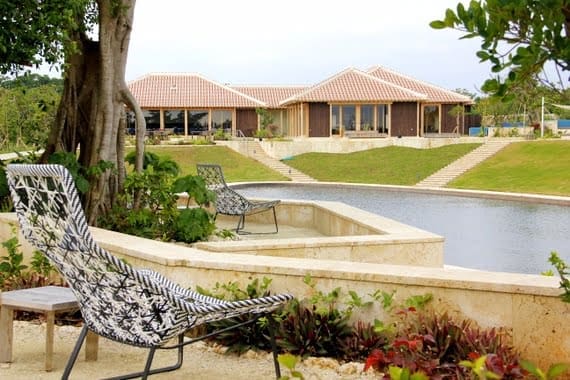
Our first stop was the 9-km long Taketomi or “God’s Island.” Over two centuries ago there was massive tsunami that destroyed neighboring islands and wiped out most of the communities but little Taketomi survived. As legend has it, God floated the island to save it from the storm. It is a deeply traditional and close-knit community and to even dream of building a resort here, the owner of Hoshino Resorts had to work with the island elders for seven years to get their approval. Keeping with the local ways, the hotel is built in the traditional Okinawan style with red clay tile roofs, coral walls, and–the most important fixture of any home in this region of Okinawa–the guardian Shisa (I will explain later).
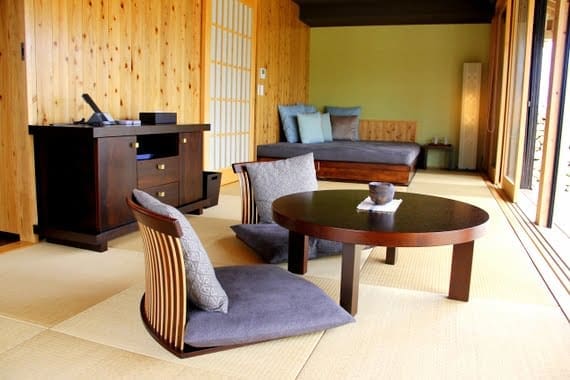
Every guest has their own free-standing house, which can either be furnished Western style with high tables, chairs, and a raised bed or in the traditional Japanese style with wall-to-wall Tatami mats, low-profile seating and futon beds. Check out the slideshow for a bathroom that could soak away even the most stressful day at the office.
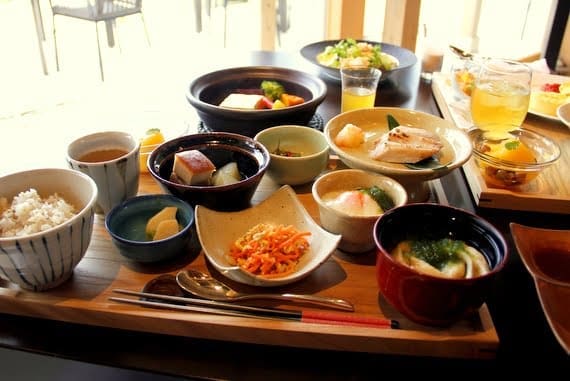
Without a shadow of a doubt the cuisine at Hoshinoya Taketomi was some of the best we experienced in all of Japan–and that is no easy feat. As you can see in this picture (our Japanese breakfast center, and an American breakfast on the tray off-frame to the right) the food was not only scrumptious, but bountiful.
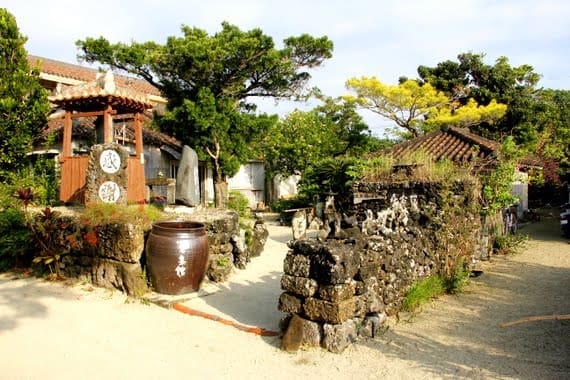
After breakfast we borrowed a pair of bicycles to tour the charming 350-person town. Biking along the coral-lined streets, draped with bougainvillea, dotted with Bonsai trees, and with the occasional ox cart was pure postcard material.
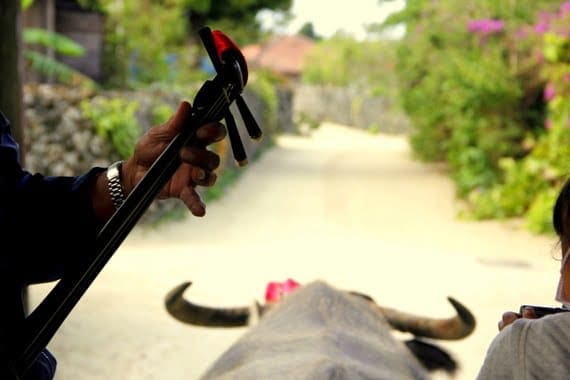
For centuries the ox cart was the only form of transportation around the island. Today you can take rides around the town with an adorable old Japanese man who serenades you with a shamisen. How could we resist?
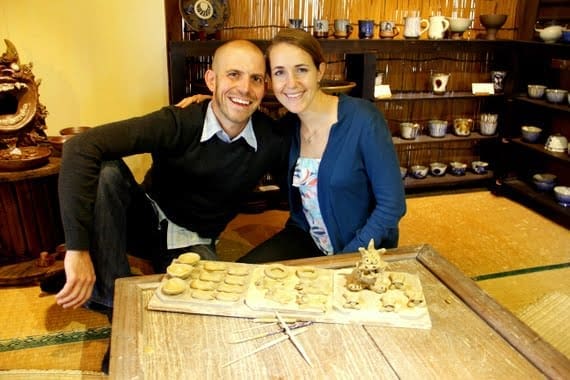
In Okinawa, you’ll notice that each house has a scary but endearing lion-dog creature snarling from the rooftop. This little guardian can be purchased throughout town or for a bit more fun…self-made at a pottery studio! Anne crafted a big gnarly Shisa (maybe it will protect our Hoboken home), and I made a bunch of Shisa feet for chopstick holders.
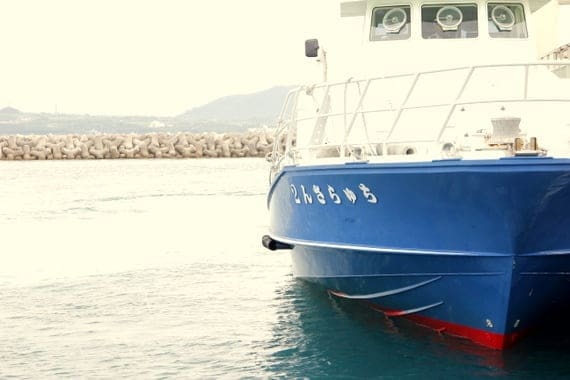
Next Stop….The adventure capital of Okinawa: Iriomote. We said farewell to Taketomi and hopped a ferry this tropical paradise.
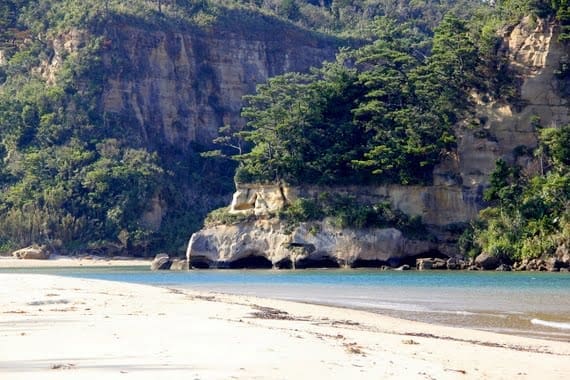
After checking into the beach-front Hoshino Resort Nirakanai Iriomotejima we jumped into our suits and strolled the beach, exploring the numerous inlets and river systems that have carved the second largest Okinawan island into the rugged beauty she is today.
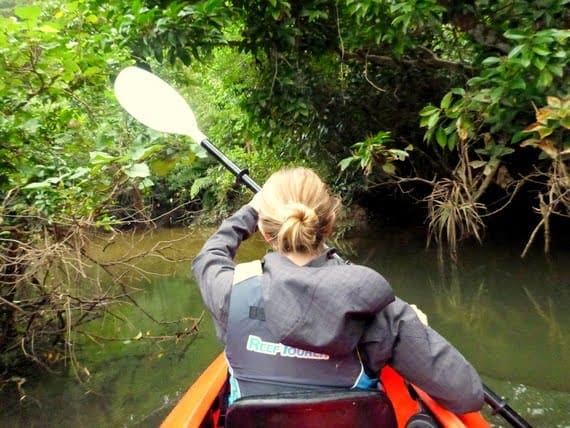
Kayaking is one of the best ways to explore Iriomote so we paddled to where the massive Nakara river meets the sea and explored its many mangrove and animal-rich channels. Always wanting to push an adventure to the limit, we followed this one stream until we could barley fit or float through the dense trees.
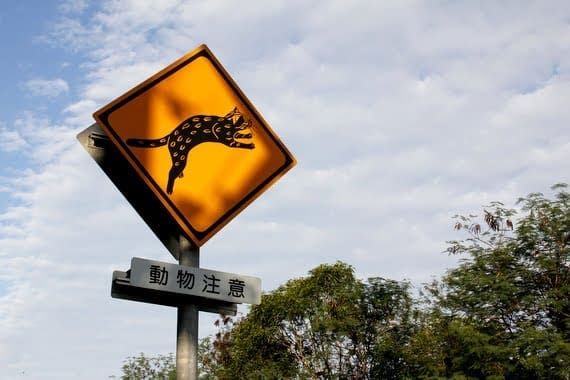
The following day we met up again with our guide Hiro and headed for a jungle trek. En route he described the highly endangered leopard-like Iriomote Cat that can only be found on the island. Needless to say, our heads were on swivels for the entire trek. If the cats look even half as cool as the one on this sign, it might be worth a return trip to Iriomote, just to search one out.
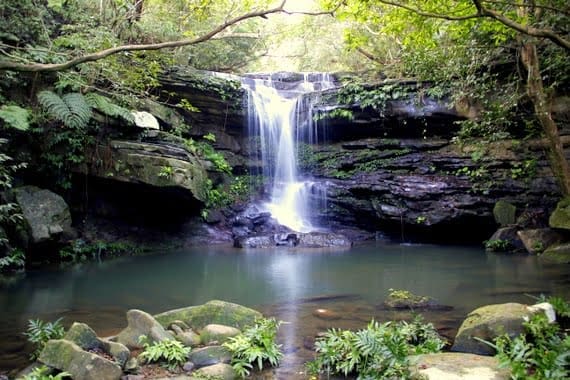
After a short jaunt into the jungle we spotted this gorgeous fall and stopped for a little morning coffee and biscuits.
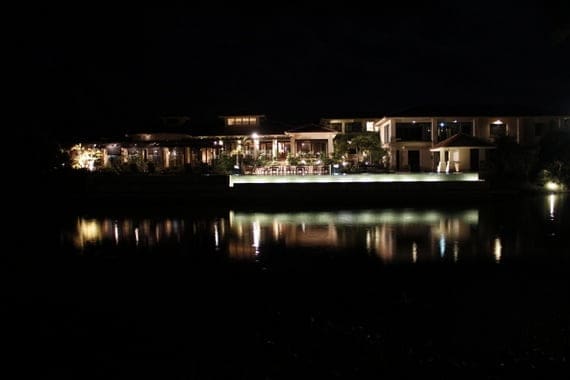
The island hopping continues with Kohama and our stay at Hoshino Resort Kohamajima. Not only was the hotel on the beach, its rooms and restaurants were built over a network of canals so no matter where you were on the property, you felt the tranquil presence of water. The reflections at night were extra stunning.
Where to stay in Okinawa
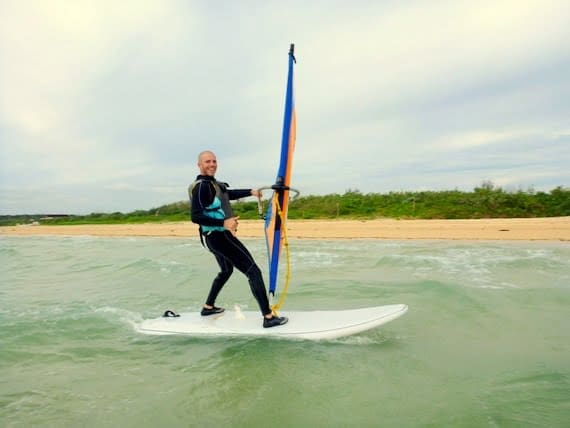
With a multitude of activities and tools for relaxation, Kohamajima is the kind of resort you never have to (or want to) leave. We had a massage, cruised the golf course on a mini safari, did a yoga class, and even tried our hand at windsurfing. Kohama is actually one of the best windsurfing/kitesurfing spots in Okinawa which made for an awesome but full-throttle experience for us noobz.
We felt so lucky to delve into the far-flung islands of Okinawa. There are virtually no westerners to be found, just a few Japanese tourists also curious about this remote and pristine part of Japan. The food, landscape, people, and culture is really like no where else in the country or the world.
